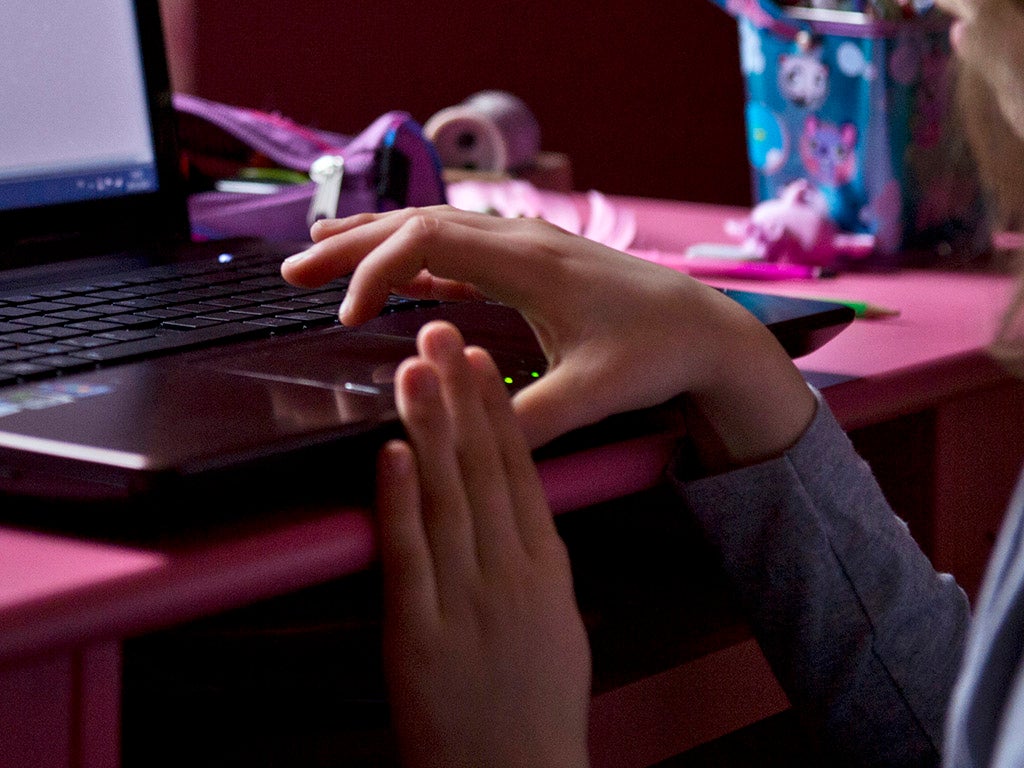Safer Internet Day: The Children Act has to be brought into the 21st century
The key to online resilience is to build children’s judgement and confidence

Tomorrow is Safer Internet Day, when schools around the country will be working with organisations as diverse as Google, the FA and the BBC to try to keep children safe online.
All very estimable. But what, in 2015, do we mean exactly by internet safety, when the barriers between offline and online are breaking down? If your daughter has an eating disorder, the chances are she will be reinforcing her eating habits on pro-anorexia websites. If your son is being bullied, he won’t be leaving his persecutors behind at the school gates; they will be in his bedroom. The digital world and what we used to call the real world are seeping into one another.
The last major piece of legislation aimed at safeguarding young people, the Children Act, was passed in 2004. Facebook registered as a domain name in 2005. Much of what makes life meaningful for young people – their online activity – is not covered by the laws that were designed to keep them safe.
The Parent Zone, my organisation, wants to see the Children Act updated, so that the rules for offline safeguarding are extended to children’s digital activities. If as a society, we believe children need a degree of protection, presumably it shouldn’t lapse whenever they switch on some device.
At the moment, if moderators on children’s websites have concerns about a child, it’s not clear what they’re supposed to do with them.
In one instance I know of, a moderator was threatened with the sack if she reported two children talking about raping another child. She did report it – she is brave – but a change in the law would leave no room for argument, and would make clear where adults are supposed to take troubling information (just as it’s clear if they’re running an offline activity).
The whole notion of internet safety needs an overhaul. The old recommendation to keep the family computer in the living room (which you can still find in the guidance even from supposedly reputable organisations), presumably so you can keep an eye on what your kids are accessing, is nonsensical when Ofsted figures show that 20 per cent of 8- to 11-year-olds and 65 per cent of 12- to 15 year-olds have their own smartphone. Even if your family is holding the line against the march of devices, there’s nothing to stop some other child sharing his own explorations of the internet in the playground.
This is not to say that there aren’t things that parents can and should do to minimise risk to their children – but we also need to be aware that it’s impossible to eliminate risk altogether.
We are subjected to a blizzard of statistics about online risks: that 14 per cent of 9- to 16-year-olds who are online have seen sexual images or that 4 per cent have met an online contact offline in the past year.
These are significant proportions of children: it’s not surprising that from time to time we’re gripped by moral panics. But risk is not the same thing as harm and we currently know remarkably little about how much of this translates into actual trouble. The best research we have, from EU Kids Online, led by Sonia Livingstone at the LSE, asks children themselves. Of the 14 per cent of children who say they have seen images that are “obviously sexual – for example, showing naked people or people having sex”, one in three were bothered by what they saw, and half of those were fairly or very upset.
Of the 4 per cent of 9- to 16-year-olds who had had an offline meeting with someone they’d met online in the past year, one in six were bothered by what happened, and about half of those were fairly or very upset.
The situation is complicated by the fact that the internet is also generally agreed to be a good and thrilling thing, and to do almost anything on it entails risk. To post content, you need to supply personal details. To make new connections, you need to communicate with “strangers”. So even if we wanted to eliminate risk (and developmental psychologists would tell us that, for adolescents, that’s a bad thing) we couldn’t.
Having taken sensible precautions against risk, we need to concentrate on minimising the instances where risk turns into harm. And this is another area where the boundaries are breaking down: the best way to do this online looks very like good parenting offline.
The evidence increasingly shows that the key to online resilience is to build children’s judgement, discrimination, confidence and creativity.
With CEOP, the Child Exploitation and Online Protection command of the National Crime Agency, the Parent Zone has recently launched Parent Info, a service hosted on schools’ websites, which makes little distinction between online and offline resilience. Self-harm, body image, eating disorders, sexting – all these and many other issues of adolescence are amplified, aggravated and given new forms by the internet. But parents need to address them holistically, with an eye to what is happening offline and online.
In a way, this is good news, because, while the internet may be five steps ahead of parents, on the whole we know quite a bit about bringing up children. But it’s also bad news, because there is a growing body of evidence that young people who are vulnerable offline also tend to be vulnerable online.
The internet is reinforcing the cycle of deprivation. This won’t be addressed by looking at the internet alone. Safer Internet Day really needs to be Safer Everything Day.
Join our commenting forum
Join thought-provoking conversations, follow other Independent readers and see their replies
Comments
Bookmark popover
Removed from bookmarks